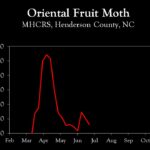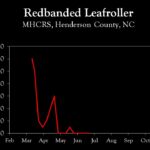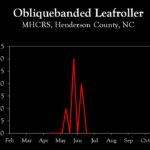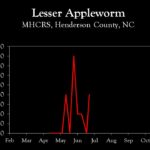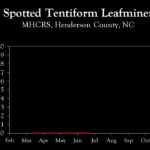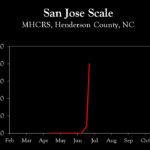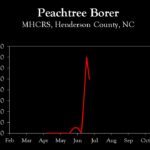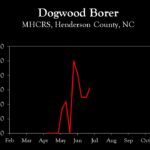WNC Orchard Insect Pest Populations – June 27, 2024
go.ncsu.edu/readext?1010925
en Español / em Português
El inglés es el idioma de control de esta página. En la medida en que haya algún conflicto entre la traducción al inglés y la traducción, el inglés prevalece.
Al hacer clic en el enlace de traducción se activa un servicio de traducción gratuito para convertir la página al español. Al igual que con cualquier traducción por Internet, la conversión no es sensible al contexto y puede que no traduzca el texto en su significado original. NC State Extension no garantiza la exactitud del texto traducido. Por favor, tenga en cuenta que algunas aplicaciones y/o servicios pueden no funcionar como se espera cuando se traducen.
Português
Inglês é o idioma de controle desta página. Na medida que haja algum conflito entre o texto original em Inglês e a tradução, o Inglês prevalece.
Ao clicar no link de tradução, um serviço gratuito de tradução será ativado para converter a página para o Português. Como em qualquer tradução pela internet, a conversão não é sensivel ao contexto e pode não ocorrer a tradução para o significado orginal. O serviço de Extensão da Carolina do Norte (NC State Extension) não garante a exatidão do texto traduzido. Por favor, observe que algumas funções ou serviços podem não funcionar como esperado após a tradução.
English
English is the controlling language of this page. To the extent there is any conflict between the English text and the translation, English controls.
Clicking on the translation link activates a free translation service to convert the page to Spanish. As with any Internet translation, the conversion is not context-sensitive and may not translate the text to its original meaning. NC State Extension does not guarantee the accuracy of the translated text. Please note that some applications and/or services may not function as expected when translated.
Collapse ▲It’s Time for Second Generation Codling Moth
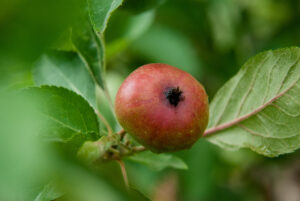 Current Conditions: In lower elevation orchards (i.e., less than about 1400 feet, such as Cleveland County), second generation codling egg laying has started (cumulative DD are at about 1480). In higher elevation orchards such as Henderson County, where DD accumulations are at about 1180, and it will be another 7 to 10 days before egg laying is predicted to begin. Egg laying in the southeast begins between 1400-1450 DD
Current Conditions: In lower elevation orchards (i.e., less than about 1400 feet, such as Cleveland County), second generation codling egg laying has started (cumulative DD are at about 1480). In higher elevation orchards such as Henderson County, where DD accumulations are at about 1180, and it will be another 7 to 10 days before egg laying is predicted to begin. Egg laying in the southeast begins between 1400-1450 DD
Determining the Need for Insecticidal Control: Remember that the codling moth degree-day model is a tool to aid in timing insecticide sprays to coincide with egg hatch of respective generations. It does not predict the need for sprays. Codling moth populations vary widely from location to location, and insecticidal control is not necessary in orchards with extremely low populations. Conditions in which populations are at extremely low density and where insecticidal control is most frequently NOT needed for the second generation include:
1) Orchards where mating disruption has been used for multiple years and there is no evidence of damage by the first generation. Regular use of mating disruption greatly suppresses populations and can lead to near local extinction.
2) Non-mating disruption orchards that also have low populations, characterized by the absence of damage from first generation larvae (i.e., infested fruit) and low pheromone trap captures.
Pheromone trapping is an essential tool to gauge population densities and the need for insecticidal sprays. If mating disruption is not used, a conservative threshold to dictate the need for sprays is 5 moths per trap per week (using a CM L2 lure). In mating disruption orchards, the capture of 3 moths per trap cumulatively over a two-week period warrants an insecticide application.
Insecticide Resistance Management: Since 2008, chemical control of codling moth has relied primarily on insecticides in two different classes: the diamides (Altacor, Exirel, and Verdepryn) and spinosyns (Delegate). Alternating the use of these two groups of insecticides against the different generations has likely contributed to the long-term effectiveness of these products. As a reminder, reserve one class of products against the first generation and the other for the second generation. For example, if Altacor (or Exirel or Verdepryn) was applied during the first generation, do not use these products during second generation flight, but instead apply Delegate. Alternatively, if Delegate was applied against the first generation then use the diamides during second generation flight. The goal is to avoid exposing the same generation to both types of products.
Learn more about southeastern apple insect pests at the Apple Insect Management page.
2024 Average Weekly Trap Captures
| HENDERSON COUNTY | |||
| Insects per trap | |||
| Jun 10 | Jun 19 | Jun 24 | |
| Codling moth | 3.5 | 1.0 | 0.5 |
| Oriental fruit moth | 29.0 | 18.0 | 12.0 |
| Tufted apple bud moth | 16.0 | 1.0 | 0.0 |
| Redbanded leafroller | 0.0 | 0.0 | 0.0 |
| Obliquebanded leafroller | 2.0 | 0.0 | 0.0 |
| Lesser appleworm | 2.0 | 0.0 | 4.0 |
| Apple maggot (research orchards) | 0.0 | 1.0 | 0.0 |
| Apple maggot (abandoned orchard) | 0.0 | 0.0 | 2.0 |
| Brown marmorated stink bug (commercial) | 3.0 | 1.0 | 1.3 |
| Brown marmorated stink bug (unsprayed research orchard) | 0.0 | 1.0 | 1.0 |
| Spotted tentiform leafminer | 0.0 | 0.0 | 0.0 |
| Dogwood borer | 25.0 | 25.0 | 31.0 |
| Peachtree borer | 0.0 | 14.0 | 10.0 |
| Lesser peachtree borer | 18.0 | 14.0 | 2.0 |
| San Jose scale | 0.0 | 20.0 | 200.0 |
*Note that these averages illustrate only the timing of insect emergence and fluctuations in populations, and are not representative of population levels in any given orchard. The only way to have an accurate assessment of an individual orchard’s populations is to set up traps in that orchard.
2024 Accumulated Degree Days
| HENDERSON COUNTY | ||||
| Jun 10 | Jun 19 | Jun 24 | ||
| Codling moth (Biofix: April 15) | 814 | 1010 | 1128 | |
| Oriental fruit moth (Biofix: March 15) | 1372 | 1614 | 1756 | |
| Tufted apple bud moth (Biofix: April 15) | 1078 | 1320 | 1462 | |




